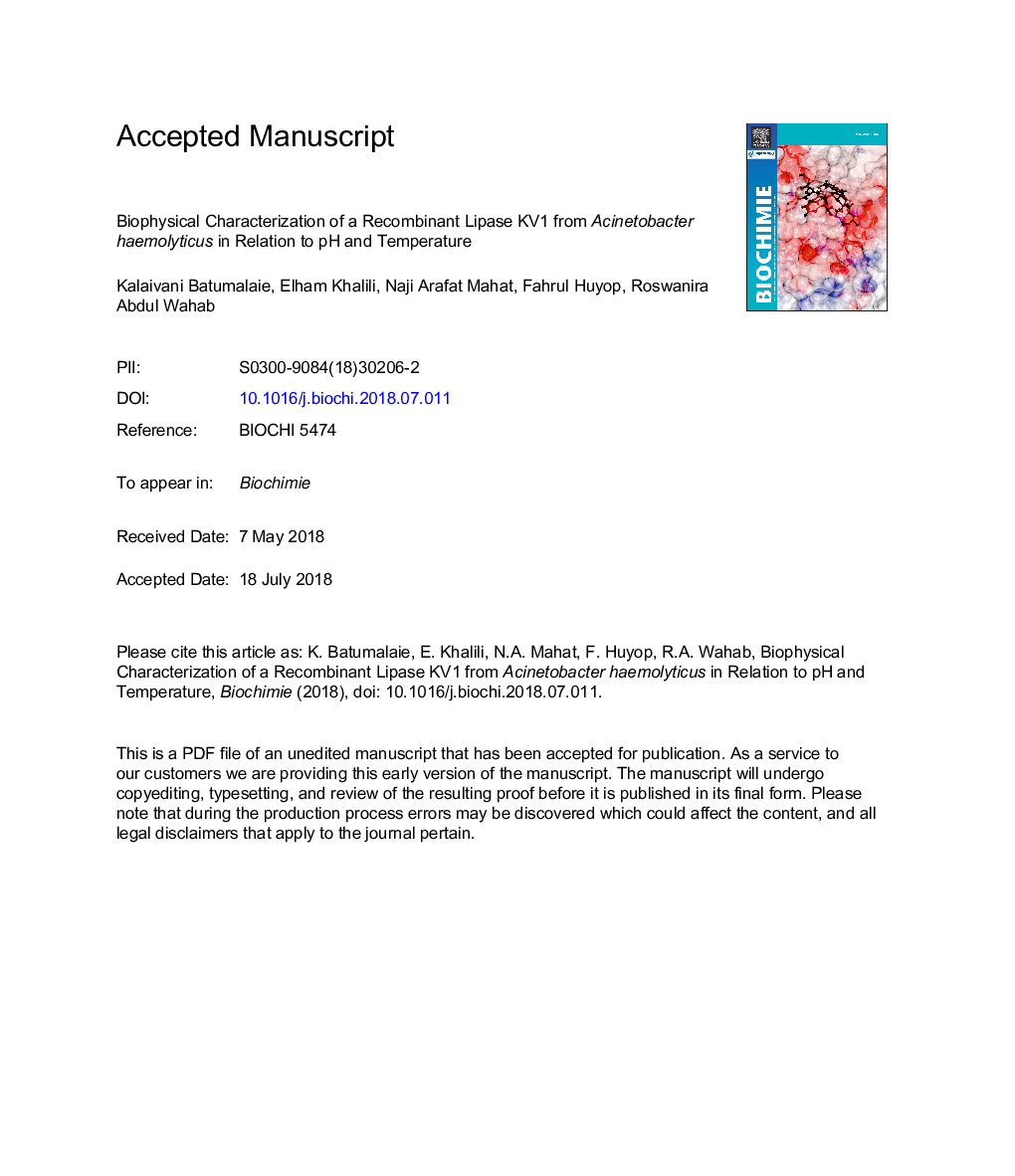| Article ID | Journal | Published Year | Pages | File Type |
|---|---|---|---|---|
| 8304121 | Biochimie | 2018 | 49 Pages |
Abstract
Spectroscopic and calorimetric methods were employed to assess the stability and the folding aspect of a novel recombinant alkaline-stable lipase KV1 from Acinetobacter haemolyticus under varying pH and temperature. Data on far ultraviolet-circular dichroism of recombinant lipase KV1 under two alkaline conditions (pH 8.0 and 12.0) at 40 °C reveal strong negative ellipticities at 208, 217, 222 nm, implying its secondary structure belonging to a α + β class with 47.3 and 39.0% ellipticity, respectively. Results demonstrate that lipase KV1 adopts its most stable conformation at pH 8.0 and 40 °C. Conversely, the protein assumes a random coil structure at pH 4.0 and 80 °C, evident from a strong negative peak at â¼ 200 nm. This blue shift suggests a general decline in enzyme activity in conjunction with the partially or fully unfolded state that invariably exposed more hydrophobic surfaces of the lipase protein. The maximum emission at â¼335 nm for pH 8.0 and 40 °C indicates the adoption of a favorable protein conformation with a high number of buried tryptophan residues, reducing solvent exposure. Appearance of an intense Amide I absorption band at pH 8.0 corroborates an intact secondary structure. A lower enthalpy value for pH 4.0 over pH 8.0 and 12.0 in the differential scanning calorimetric data corroborates the stability of the lipase at alkaline conditions, while a low Km (0.68â¯Â±â¯0.03â¯mM) for tributyrin verifies the high affinity of lipase KV1 for the substrate. The data, herein offer useful insights into future structure-based tunable catalytic activity of lipase KV1.
Related Topics
Life Sciences
Biochemistry, Genetics and Molecular Biology
Biochemistry
Authors
Kalaivani Batumalaie, Elham Khalili, Naji Arafat Mahat, Fahrul Huyop, Roswanira Abdul Wahab,
